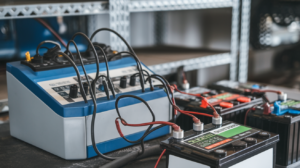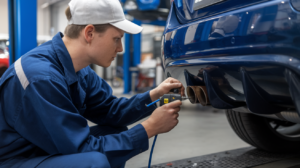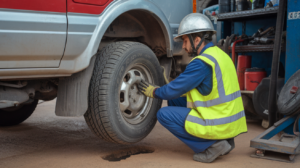Ever felt that mix of nerves and confusion when your RTA car inspection date rolls around? You’re not alone. Passing the RTA car inspection in Dubai isn’t just a formality, it’s mandatory to keep your vehicle legal, safe, and roadworthy. But with all the rules, checklists, and “what-ifs,” it’s easy to feel overwhelmed. So, what should you really know to breeze through without stress or unexpected costs?
If you’re wondering what the RTA looks for, why vehicles fail, and how to prep your ride like a pro, you’re in the right place. We’ll guide you through the essential parts of the inspection checklist and share three solid tips every Dubai vehicle owner needs. Ready to ditch the worry and drive worry-free? Let’s get started.
Why RTA Car Inspection | Essential for Every Dubai Driver
You might wonder why the RTA puts so much emphasis on inspections. Simply put, Dubai’s roads are busy, and vehicle safety is paramount. The RTA car inspection ensures your car is not a safety hazard waiting to happen.
- Ensures vehicle roadworthiness and safety
The RTA car inspection rigorously tests critical systems including brakes, tires, suspension, and lighting. Faulty brakes or worn tires drastically increase accident risk, especially in Dubai’s high-speed and high-traffic conditions. The inspection catches these issues early, ensuring your vehicle can handle sudden stops and sharp maneuvers safely. - Keeps Dubai roads clean and compliant
Environmental responsibility is a major priority in Dubai. During the RTA car inspection, emission levels are checked to ensure vehicles don’t pollute beyond legal limits. Keeping your car compliant protects the city’s air quality and aligns with Dubai’s green initiatives. - Prevents costly breakdowns and legal penalties
Driving without a valid inspection certificate can lead to fines, vehicle impoundment, or even legal troubles. Beyond that, regular inspections uncover minor mechanical faults before they escalate into expensive repairs or roadside breakdowns. The RTA car inspection helps you avoid surprises and protects your wallet. Booking with a trusted car inspection Dubai service ensures compliance without last-minute stress.”
Understanding the significance of the RTA car inspection will help you see it not as a hassle, but a vital step for safe and legal driving in Dubai.
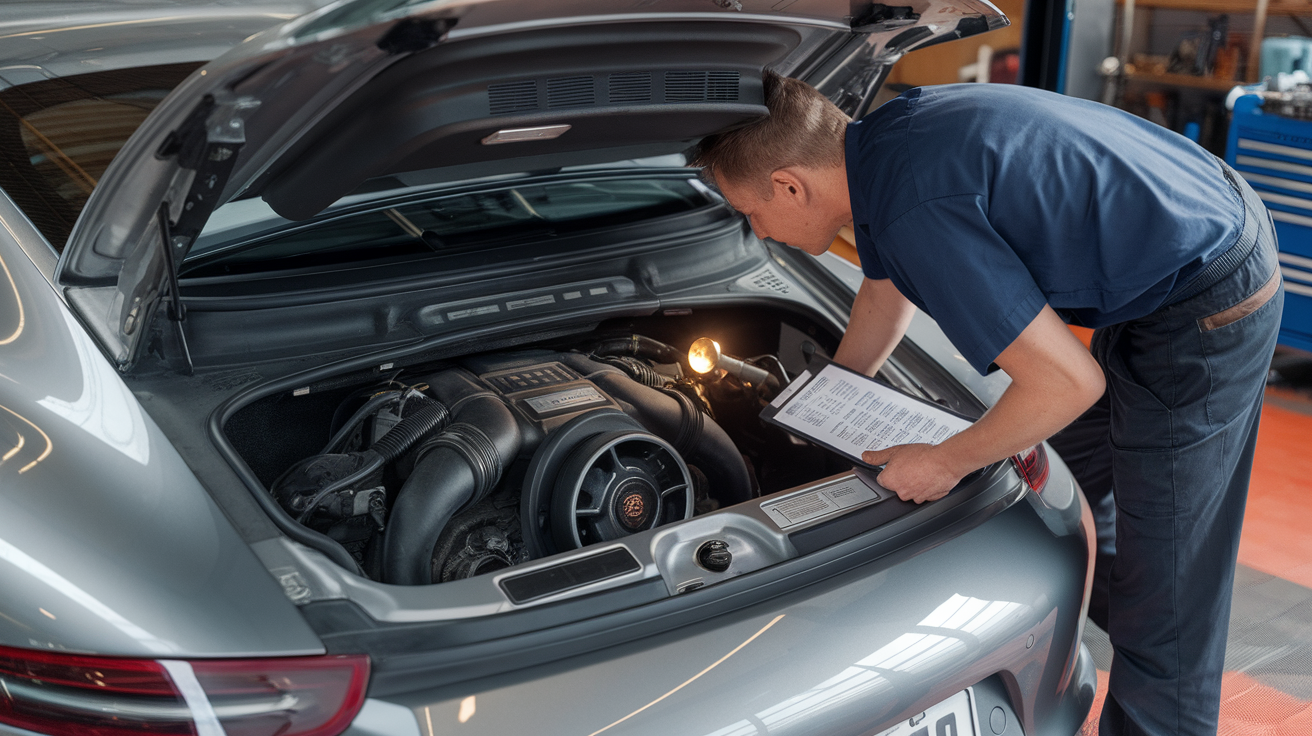
The RTA Car Inspection Process | What to Expect in Dubai
Feeling nervous about what happens during your RTA car inspection? Don’t worry. It’s a standard check to make sure your car is safe and meets Dubai’s road requirements. When you know the steps in advance, the process feels a lot smoother and less stressful. Here’s what you can expect during the inspection.
- Initial vehicle check-in and paperwork
When you arrive, you’ll present vehicle registration, insurance documents, Emirates ID, and pay the RTA car inspection fee. Having all documents ready ensures no delays. Staff verify these details carefully to confirm vehicle ownership and eligibility for inspection. - Physical inspection of your vehicle
Experienced technicians conduct a comprehensive examination covering brakes, tires, lights, suspension, steering, and exhaust. They look for wear, damage, and operational faults. For modern vehicles, diagnostic tools are often used to scan electronic systems and identify hidden error codes affecting vehicle performance. - Emission and noise tests
Your car’s exhaust emissions are measured against Dubai’s strict environmental standards. Excessive pollutants or abnormal noise levels will result in failure, emphasizing the importance of maintaining your engine and exhaust system. - Result and certificate issuance
If your vehicle meets all standards, you receive a certificate valid for one year. If it doesn’t pass, you’ll get a report detailing the issues found and instructions for repairs and re-inspection. This ensures vehicles on Dubai roads maintain safety and environmental compliance.
Being familiar with this process will help you manage your expectations and avoid last-minute surprises during your RTA car inspection.
Key Vehicle Components in RTA Car Inspection | A Complete Checklist
Wondering what parts the RTA car inspection inspects? The checklist covers key systems that directly impact your car’s safety, performance, and compliance with Dubai’s road laws. From brakes to lights, tyres to emissions, each item plays a role in keeping your vehicle roadworthy. Knowing what they look for helps you prepare and avoid surprises during the inspection.
- Brakes and braking system
The RTA car inspection measures brake pad thickness to ensure adequate stopping power. Discs are checked for warping or scoring that can cause vibrations or reduced braking efficiency. Brake fluid is tested for contamination or moisture content, as poor fluid quality reduces hydraulic pressure and brake responsiveness. - Tires and wheels
Tires must have at least the legal minimum tread depth, be free from cracks, bulges, or punctures, and be inflated to the correct pressure. Uneven tire wear may indicate suspension or alignment issues. Wheels are checked for damage or cracks that might affect driving stability. - Lights and signaling devices
All lights, including headlights, brake lights, tail lights, indicators, and hazard lights, must function correctly and be bright enough for safe driving. Burnt-out bulbs or misaligned headlights are common reasons for failing the RTA car inspection. - Suspension and steering
Shocks, springs, bushings, and steering components are evaluated for wear and damage. Faulty suspension affects ride comfort and vehicle control, especially important on Dubai’s highways and city streets. Loose steering parts can cause handling problems and increase accident risk. - Exhaust system and emissions
The inspection checks for leaks, excessive smoke, or noise from the exhaust. Emission levels are measured and compared against regulatory limits to minimize air pollution. Faulty exhaust systems or emission control failures cause inspection failure. That’s why many drivers book a car emissions testing service in Dubai ahead of their RTA inspection to stay compliant. - Vehicle body and chassis condition
Significant corrosion, frame damage, or missing safety equipment are serious fail points. The RTA ensures your vehicle structure is sound to protect occupants in case of accidents.
This comprehensive checklist guides you on what to check and repair before your RTA car inspection, increasing your chances of a smooth pass.
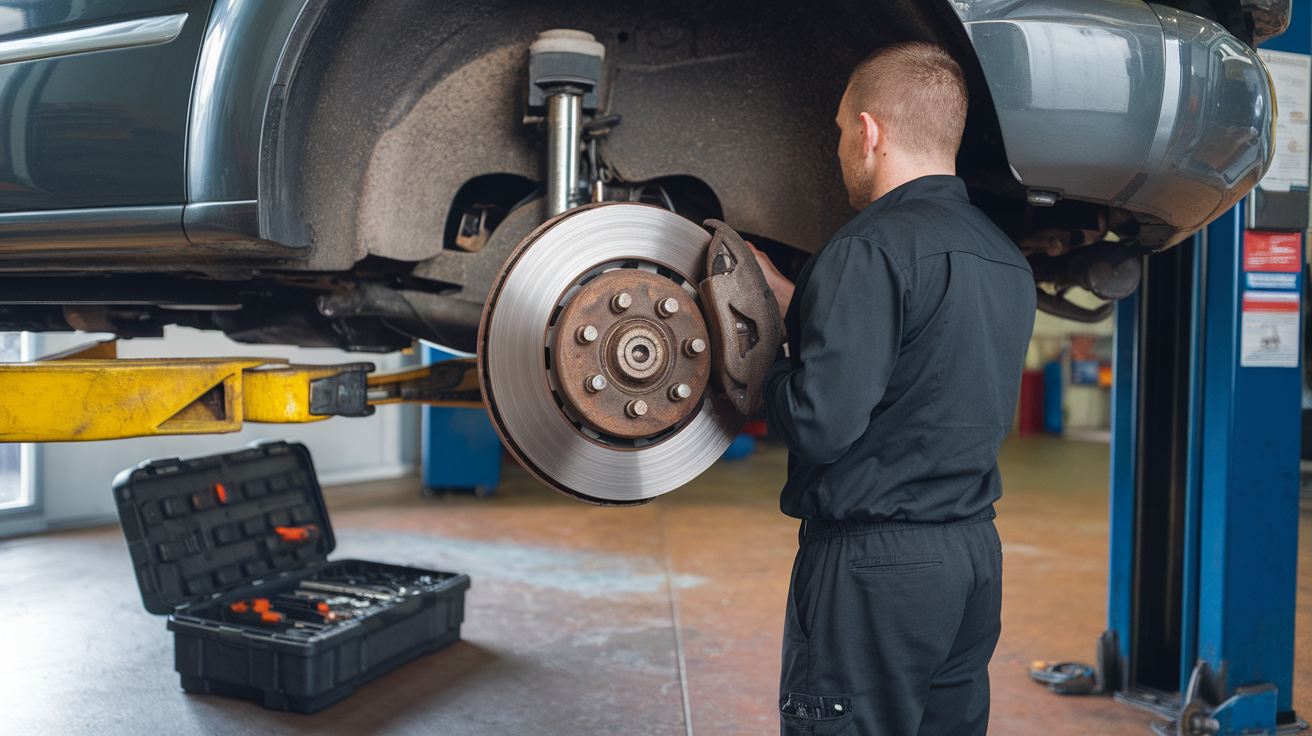
Common Reasons for RTA Car Inspection Failure | Avoid These Pitfalls
Failing the RTA car inspection can cause delays and unexpected expenses. It often means extra trips, repair bills, and wasted time. Most failures happen because of issues that could have been fixed beforehand. From worn-out tyres to faulty lights and fluid leaks, these small problems can lead to a big rejection. Here’s a closer look at the most common reasons cars fail the inspection and what you can do to avoid them.
- Worn or faulty brakes
Pads below legal thickness or damaged discs reduce your braking power dangerously. Brake fluid that’s old or contaminated affects performance. Ensuring these are in good condition before inspection is crucial. - Poor tire condition
Tires with worn tread, uneven wear patterns, or visible damage compromise grip and safety. Make sure your tires meet the legal tread depth of 1.6 mm and have no bulges or cuts. - Non-working lights
Failing to replace blown bulbs or fix malfunctioning lights can cause instant failure during the RTA car inspection. Check out our car diagnostic services blog to understand how electronic scans also detect hidden lighting and electrical issues. Lights are vital for your visibility and signaling intentions to other drivers. - Excessive exhaust emissions or noise
Engines burning oil or running inefficiently emit smoke or noise above permitted levels. Regular engine servicing and exhaust maintenance help you avoid this issue. - Suspension or steering faults
Loose or damaged components cause poor vehicle stability and can lead to unsafe handling, which inspectors will not overlook.
Knowing these pitfalls gives you the power to fix them in advance and pass your RTA car inspection without hassle.
Top 3 Tips to Prepare Your Vehicle for RTA Car Inspection
Want to pass your RTA car inspection on the first try? A little preparation goes a long way. Many cars fail due to simple issues that could have been fixed with a quick check at home or a visit to the workshop. From checking your lights to topping up fluids, these small steps can save you time, money, and frustration. Here are three smart tips to help you get inspection-ready.
- Do a self-check one week before inspection
Walk around your vehicle inspecting tires for tread and inflation. Test all external lights, headlights, brake lights, indicators, and replace any faulty bulbs. Take your car for a test drive to listen for brake noise or unusual handling. This early check helps catch easy-to-fix problems. - Get a pre-inspection at a reliable garage
Many garages offer services that mimic the RTA car inspection to spot hidden issues. Mechanics can identify problems you might miss and recommend repairs before your official inspection date. You can also explore our guide on used car inspection in Dubai, especially helpful if you’re checking a vehicle before RTA testing. This proactive step boosts your chances of passing. - Book your inspection online and arrive prepared
Schedule your inspection via the RTA website or mobile app to save time and avoid queues. Bring vehicle registration, valid insurance, Emirates ID, and payment. Clean your car inside and out, it makes a good impression and can influence the thoroughness of checks.
Using these tips reduces anxiety and helps you pass smoothly after RTA car inspection.
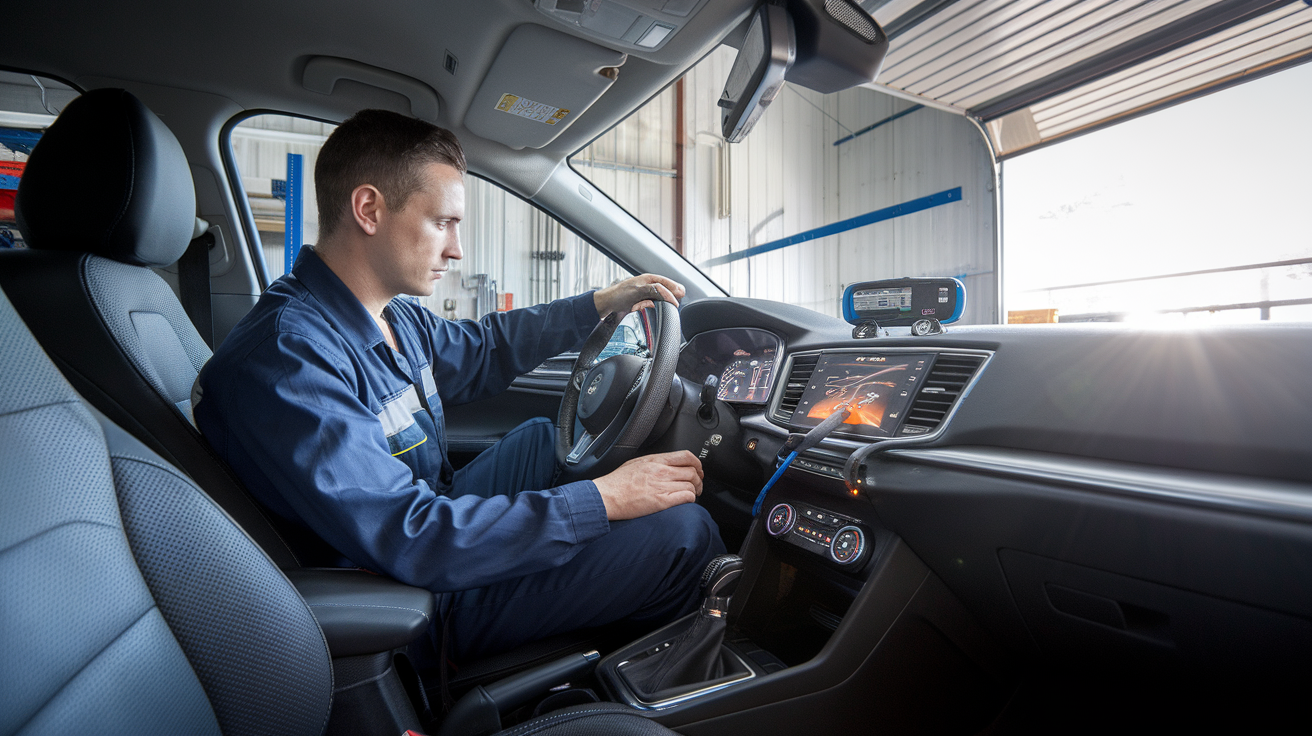
How to Book Your RTA Car Inspection | Easy Steps
Booking your RTA car inspection is straightforward with Dubai’s digital services. Whether you’re renewing your registration or clearing a vehicle for sale, the process is quick and can be done online in just a few steps. Knowing where to go and what documents you need makes it even easier. Here’s how to get it done without the hassle.
- Use the official RTA website or app
Log in, enter your vehicle details, select a nearby inspection center, and choose a date and time convenient for you. - Consider approved third-party inspection centers
Some centers approved by the RTA provide flexible hours and quicker service, helping you fit inspections into your busy schedule. - Prepare your documents and payment
Make sure your vehicle registration, insurance, and Emirates ID are current. Payments can usually be made online or at the RTA car inspection center.
Booking online saves time and makes the process smoother.
After Your RTA Car Inspection | Pass, Fail, and What Comes Next
After your RTA car inspection, what happens next depends on your vehicle’s condition. If your car passes, you can move ahead with registration or sale without any hold-ups. But if it fails, you’ll need to address the issues listed in the report and return for a re-inspection. Understanding the next steps can save you time and help you plan your repairs or paperwork smoothly.
- If you pass
You’ll receive a certificate valid for one year. Keep this safe as it’s essential for renewing your vehicle registration and insurance. - If you fail
You’ll get a detailed report listing the faults found. Most issues are fixable within a short time frame at an authorized garage. - Re-inspection process
Once repairs are completed, book a re-inspection to clear the faults and get your certificate. - Legal consequences of skipping or failing inspection
Driving without a valid RTA car inspection certificate can lead to fines, impoundment, or other penalties. Staying compliant is critical to avoid problems.
Understanding these outcomes helps you plan and act quickly after inspection.
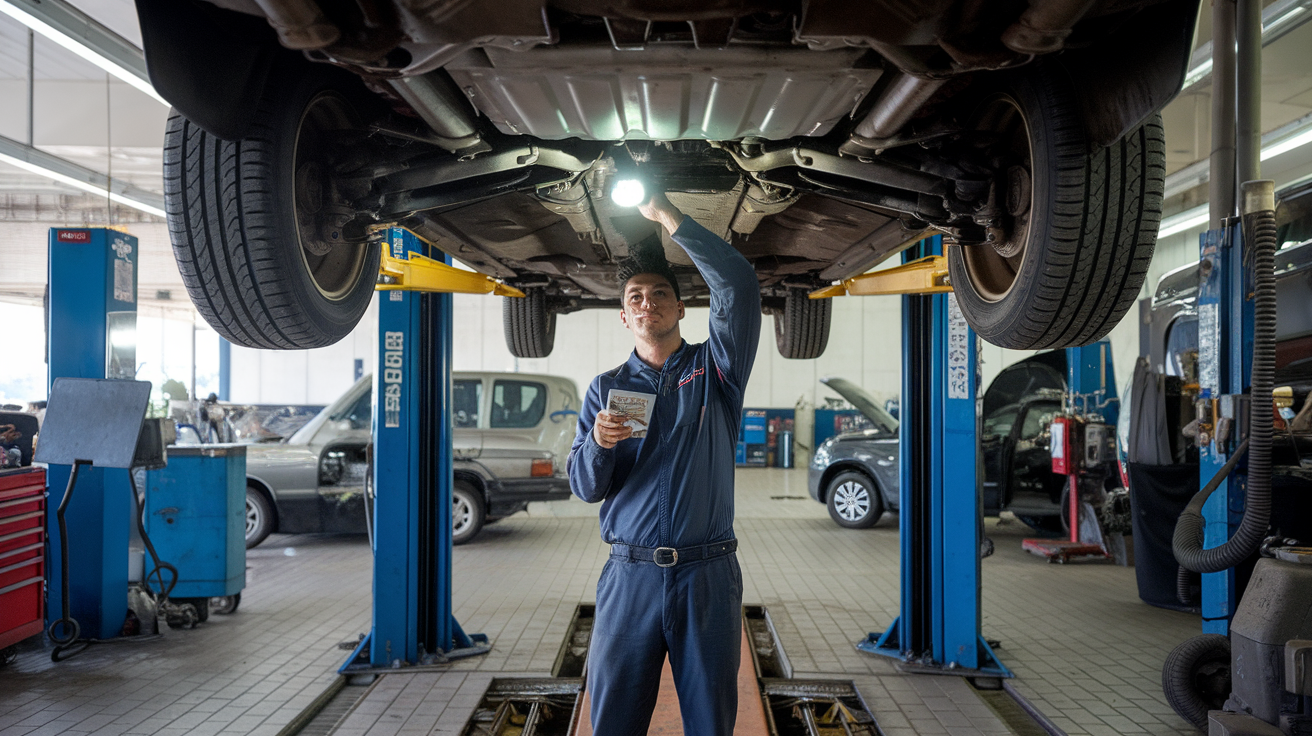
RTA Car Inspection FAQs | Answers for Dubai Vehicle Owners
- How often do I need to get my car inspected?
Typically, annual inspections are mandatory. New and certain vehicle types may have different schedules, so check RTA updates. - Can I drive if my car fails the RTA car inspection?
No, it’s illegal. Fix all issues promptly and arrange a re-inspection before driving. - What documents do I need to bring?
Vehicle registration, valid insurance, Emirates ID or driver’s license, and inspection fee payment. - How much does the RTA car inspection cost?
Costs depend on vehicle size and type but are generally reasonable and published transparently. - Are motorcycles and trucks inspected differently?
Yes, different vehicle categories have specific inspection criteria. Confirm details with the RTA.
Passing your RTA car inspection doesn’t have to be stressful. With this detailed checklist, preparation tips, and knowledge of the process, you can confidently keep your vehicle safe, legal, and ready for Dubai roads. Start your prep early and drive with peace of mind.
🚗✨ Stay safe on the road and cruise through your next inspection with confidence.

